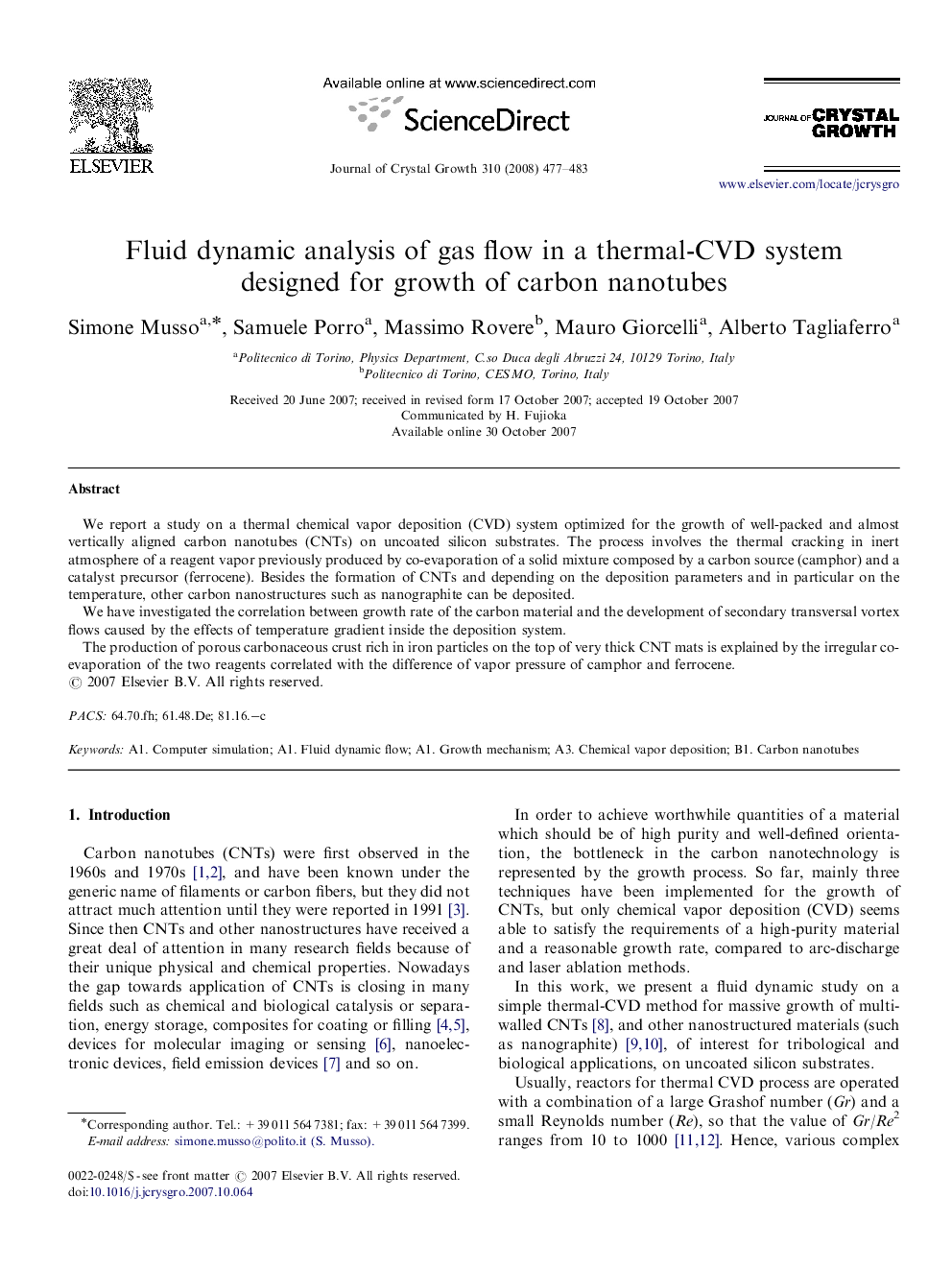| Article ID | Journal | Published Year | Pages | File Type |
|---|---|---|---|---|
| 1795723 | Journal of Crystal Growth | 2008 | 7 Pages |
We report a study on a thermal chemical vapor deposition (CVD) system optimized for the growth of well-packed and almost vertically aligned carbon nanotubes (CNTs) on uncoated silicon substrates. The process involves the thermal cracking in inert atmosphere of a reagent vapor previously produced by co-evaporation of a solid mixture composed by a carbon source (camphor) and a catalyst precursor (ferrocene). Besides the formation of CNTs and depending on the deposition parameters and in particular on the temperature, other carbon nanostructures such as nanographite can be deposited.We have investigated the correlation between growth rate of the carbon material and the development of secondary transversal vortex flows caused by the effects of temperature gradient inside the deposition system.The production of porous carbonaceous crust rich in iron particles on the top of very thick CNT mats is explained by the irregular co-evaporation of the two reagents correlated with the difference of vapor pressure of camphor and ferrocene.
